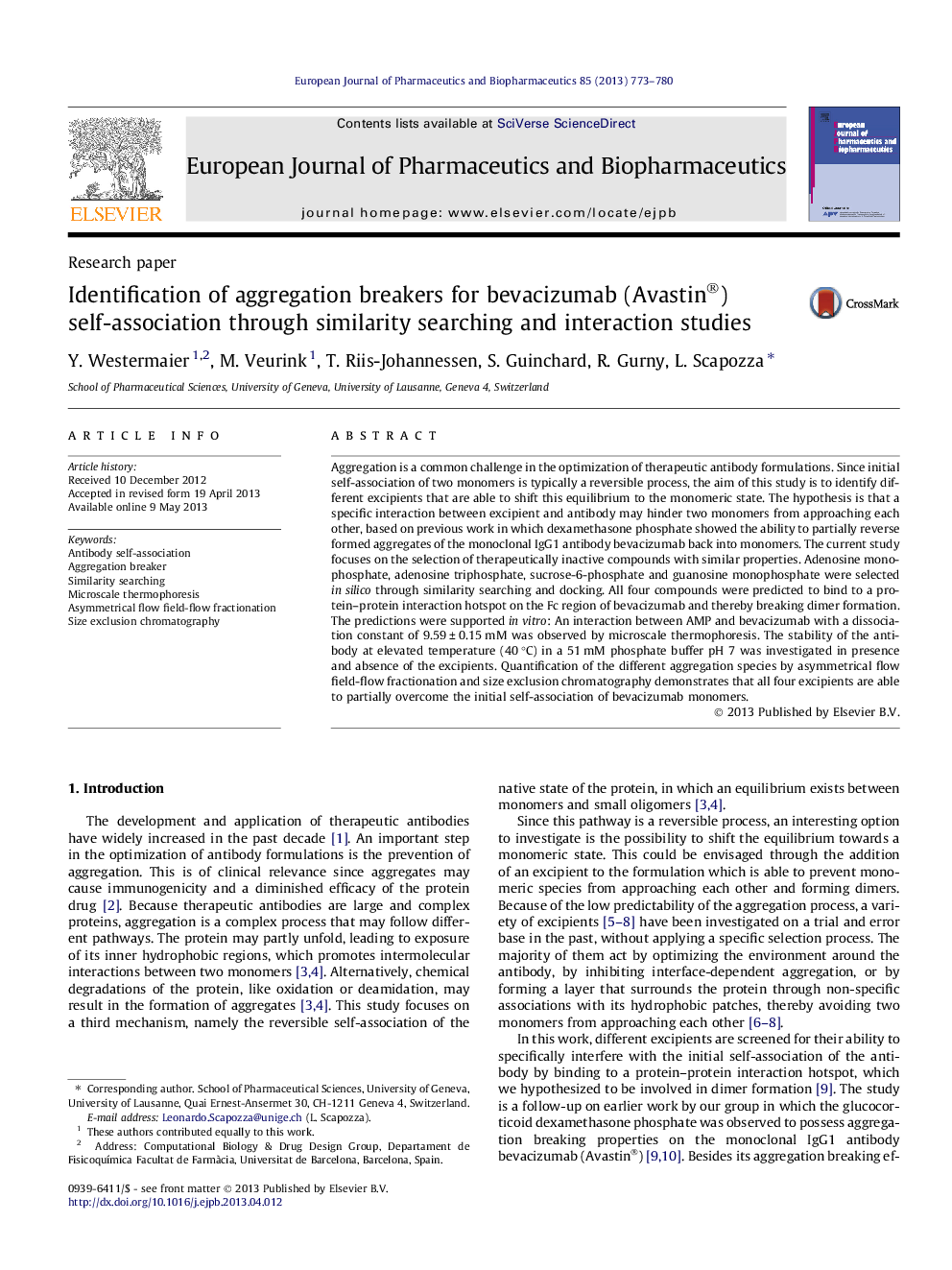| Article ID | Journal | Published Year | Pages | File Type |
|---|---|---|---|---|
| 2083746 | European Journal of Pharmaceutics and Biopharmaceutics | 2013 | 8 Pages |
Aggregation is a common challenge in the optimization of therapeutic antibody formulations. Since initial self-association of two monomers is typically a reversible process, the aim of this study is to identify different excipients that are able to shift this equilibrium to the monomeric state. The hypothesis is that a specific interaction between excipient and antibody may hinder two monomers from approaching each other, based on previous work in which dexamethasone phosphate showed the ability to partially reverse formed aggregates of the monoclonal IgG1 antibody bevacizumab back into monomers. The current study focuses on the selection of therapeutically inactive compounds with similar properties. Adenosine monophosphate, adenosine triphosphate, sucrose-6-phosphate and guanosine monophosphate were selected in silico through similarity searching and docking. All four compounds were predicted to bind to a protein–protein interaction hotspot on the Fc region of bevacizumab and thereby breaking dimer formation. The predictions were supported in vitro: An interaction between AMP and bevacizumab with a dissociation constant of 9.59 ± 0.15 mM was observed by microscale thermophoresis. The stability of the antibody at elevated temperature (40 °C) in a 51 mM phosphate buffer pH 7 was investigated in presence and absence of the excipients. Quantification of the different aggregation species by asymmetrical flow field-flow fractionation and size exclusion chromatography demonstrates that all four excipients are able to partially overcome the initial self-association of bevacizumab monomers.
Graphical abstractFigure optionsDownload full-size imageDownload high-quality image (74 K)Download as PowerPoint slide
